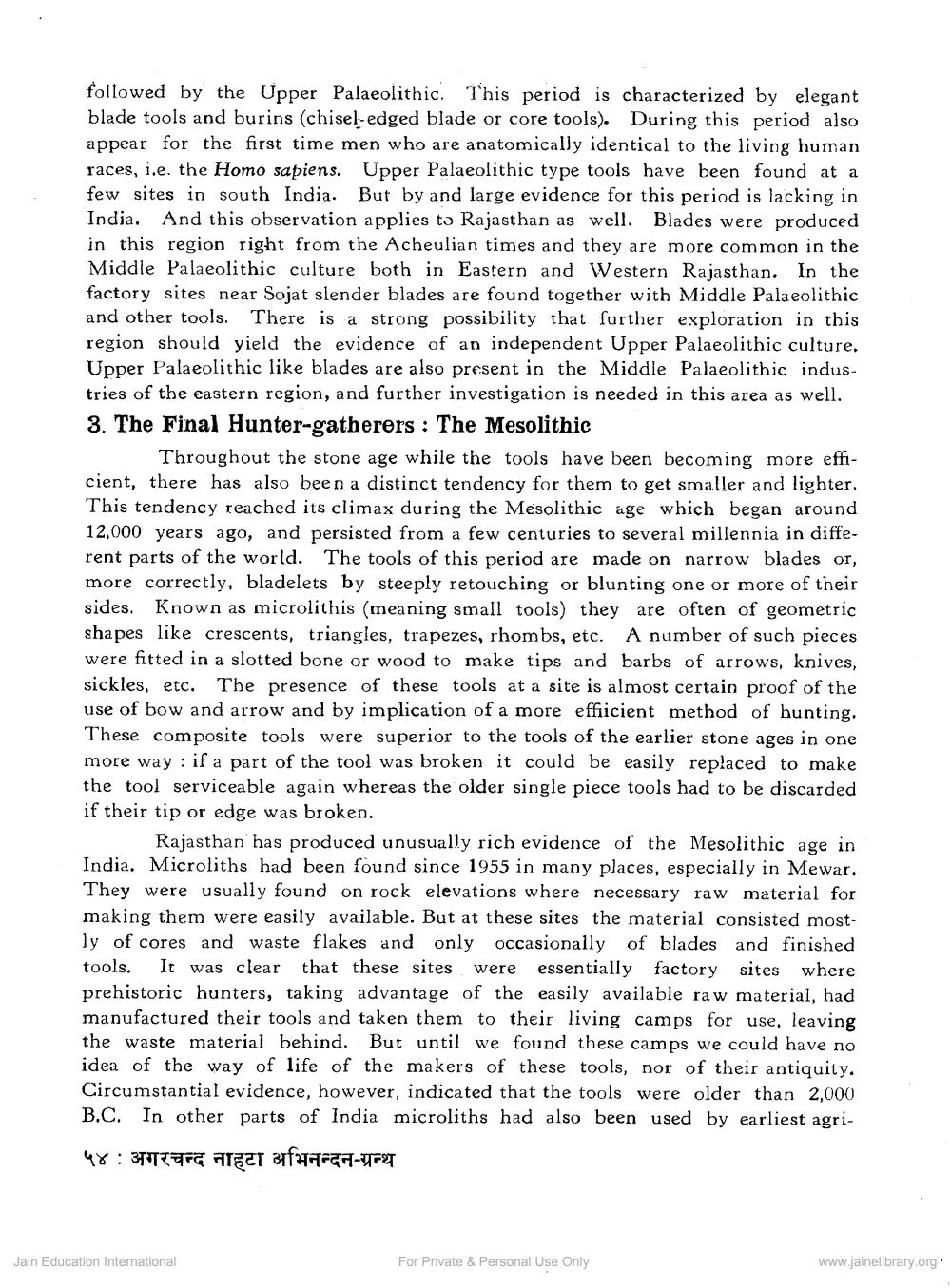________________
followed by the Upper Palaeolithic. This period is characterized by elegant blade tools and burins (chisel-edged blade or core tools). During this period also appear for the first time men who are anatomically identical to the living human races, i.e. the Homo sapiens. Upper Palaeolithic type tools have been found at a few sites in south India. But by and large evidence for this period is lacking in India. And this observation applies to Rajasthan as well. Blades were produced in this region right from the Acheulian times and they are more common in the Middle Palaeolithic culture both in Eastern and Western Rajasthan. In the factory sites near Sojat slender blades are found together with Middle Palaeolithic and other tools. There is a strong possibility that further exploration in this region should yield the evidence of an independent Upper Palaeolithic culture. Upper Palaeolithic like blades are also present in the Middle Palaeolithic industries of the eastern region, and further investigation is needed in this area as well. 3. The Final Hunter-gatherers : The Mesolithic
Throughout the stone age while the tools have been becoming more efficient, there has also been a distinct tendency for them to get smaller and lighter. This tendency reached its climax during the Mesolithic age which began around 12,000 years ago, and persisted from a few centuries to several millennia in different parts of the world. The tools of this period are made on narrow blades or, more correctly, bladelets by steeply retouching or blunting one or more of their sides. Known as microlithis (meaning small tools) they are often of geometric shapes like crescents, triangles, trapezes, rhombs, etc. A number of such pieces were fitted in a slotted bone or wood to make tips and barbs of arrows, knives, sickles, etc. The presence of these tools at a site is almost certain proof of the use of bow and arrow and by implication of a more effiicient method of hunting. These composite tools were superior to the tools of the earlier stone ages in one more way: if a part of the tool was broken it could be easily replaced to make the tool serviceable again whereas the older single piece tools had to be discarded if their tip or edge was broken.
Rajasthan has produced unusually rich evidence of the Mesolithic age in India. Microliths had been found since 1955 in many places, especially in Mewar, They were usually found on rock elevations where necessary raw material for making them were easily available. But at these sites the material consisted mostly of cores and waste flakes and only occasionally of blades and finished tools. It was clear that these sites were essentially factory sites where prehistoric hunters, taking advantage of the easily available raw material, had manufactured their tools and taken them to their living camps for use, leaving the waste material behind. But until we found these camps we could have no idea of the way of life of the makers of these tools, nor of their antiquity. Circumstantial evidence, however, indicated that the tools were older than 2,000 B.C. In other parts of India microliths had also been used by earliest agri
५४ : अगरचन्द नाहटा अभिनन्दन-ग्रन्थ
Jain Education International
For Private & Personal Use Only
www.jainelibrary.org




